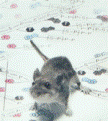Papers in the Biological Sciences

Jay F. Storz Publications
Document Type
Article
Date of this Version
2016
Citation
Adv Exp Med Biol. 2016 ; 903: pp. 113–128. doi:10.1007/978-1-4899-7678-9_8.
Abstract
Recent studies of indigenous human populations at high altitude have provided proof-of-principle that genome scans of DNA polymorphism can be used to identify candidate loci for hypoxia adaptation. When integrated with experimental analyses of physiological phenotypes, genome-wide surveys of DNA polymorphism and tissue-specific transcriptional profiles can provide insights into actual mechanisms of adaptation. It has been suggested that adaptive phenotypic evolution is largely mediated by cis-regulatory changes in genes that are located at integrative control points in regulatory networks. This hypothesis can be tested by conducting transcriptomic analyses of hypoxic signaling pathways in conjunction with experimental measures of vascular oxygen supply and metabolic pathway flux. Such studies may reveal whether the architecture of gene regulatory networks can be used to predict which loci (and which types of loci) are likely to be “hot spots” for adaptive physiological evolution. Functional genomic studies of deer mice (Peromyscus maniculatus) demonstrate how the integrated analysis of variation in tissue-specific transcriptomes, whole-animal physiological performance, and various subordinate traits can yield insights into the mechanistic underpinnings of high-altitude adaptation.

